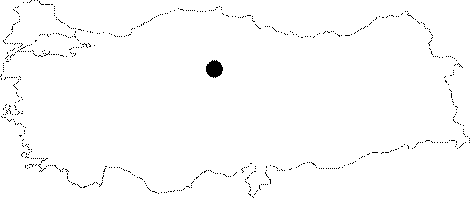|
©The Archaeological Settlements of Turkey - TAY Project
|
|
|
|
|
|
Alisar Höyük |
|
|
For site maps and drawings please click on the picture...  |
For photographs please click on the photo...  |
|
Type:
|
Mound |
|
Altitude:
|
1010 m |
|
Region:
|
Central Anatolia |
|
Province:
|
Yozgat |
|
District:
|
Sorgun |
|
Village:
|
Alisar |
|
Investigation Method:
|
Excavation |
|
Period:
|
|
|
|
|
 |
|
| Location: It lies about 2;5 km north of the Alisar Village; south of the Sorgun District; southeast of the Yozgat Province. |
| Geography and Environment: The mound is located on a big plain irrigated by the Konak Suyu. It is believed that the Konak Suyu used to flow near the mound. Alisar is the biggest settlement in Central Anatolia. The main settlement of Alisar is reported to measure ca. 520x350 m in dimensions in accordance with the distribution of sherds. A conic height rises in the middle of the terrace up to 30 m high measuring 245x145 m in dimensions. The mound was named after the nearest village; Alisar. |
| History: |
| Research and Excavation: It was excavated for six seasons between 1927-32 under the direction of H.H. von der Osten on behalf of the Oriental Institute of the University of Chicago with the colloboration of E.F. Schmidt. The excavation team became the center of a heavy critisim due to absence of any extraordinary finds. Although it was more carefully and systematically excavated compared to other excavations in those years, the layers were mixed and confused at Alisar. Probably displacement of the settlements, in addition to the size of the mound, played a significant role in this confusion. It is a "multi-core" mound. The first cultural layer of the Late Chalcolithic/Early Bronze Age is followed by the third layer which is dating to the Early Bronze Age Phase III. The layer of the 2nd Millennium BC, which was supposed to be enumerated later, was called Level II. The excavations were started again from 1993. The recent excavations would bring the lower layers out to take their place in the Anatolian archaeology as well as bringing the settlement to a key position in the region. It takes place in the registered archaeological sites list prepared by Ministry of Culture and Tourism. |
| Stratigraphy: The fact that the excavated area was not so wide, and it was failed to combine the trenchs on the conical hill with the ones on the terrace resulted in distinctive interpretations of the excavators on stratification. Recently, many scientists adopted the following stratification for the prehistoric period [Huot 1982:72; Yakar 1985:198; Orthmann 1963:table 2]. Late Chalcolithic Age/Early Bronze Age, Phase I: Level 0; 19 M -15 M (hilltop) Late Chalcolithic Age/Early Bronze Age, Phase I: Level Ia;14 M-12 M (hilltop) Early Bronze Age II-IIIa (Copper Age): Level Ib;11 M-7 M (top hill)/14-12 T (terrace) Early Bronze Age IIIb: Level III; 6 M (hilltop)/11 T (terrace) Intermediate Period: Level III; 5 M (hilltop)/10-9 T (terrace) Old Hittite Period: Level II New Hittite Period: Level IV Phrgyian-Median-Persian Period: Level V Hellenistic-Galatian-Roman-Byzantine Period: Level VI Seljuks-Ottoman Period: Level VII |
| Small Finds: Architecture: The Iron Age is represented by the Level IV. It has three three building levels, which are called IVcM, IVbM, and IVaM in ascending order. |
| Remains: |
| Interpretation and Dating: |